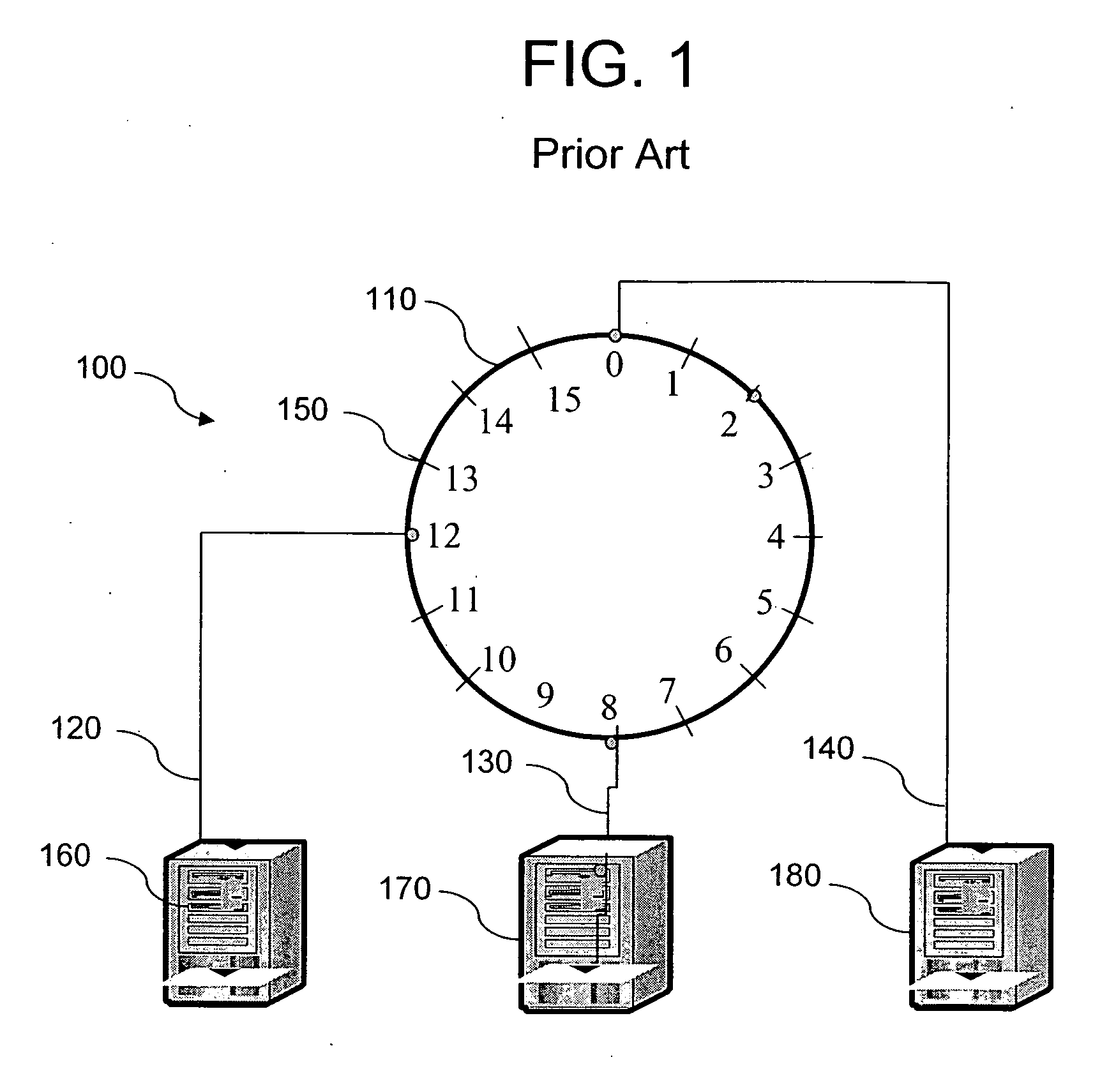Method of distributed hash table node ID collision detection
a technology of collision detection and hash table, applied in the field of distributed networks, can solve problems such as collisions between nodes
- Summary
- Abstract
- Description
- Claims
- Application Information
AI Technical Summary
Benefits of technology
Problems solved by technology
Method used
Image
Examples
Embodiment Construction
[0024] Although the invention is illustrated and described herein with reference to specific embodiments, the invention is not intended to be limited to the details shown. Rather, various modifications may be made in the details within the scope and range of equivalents of the claims and without departing from the invention.
[0025] Problems can occur in networks which use IP addresses as node IDs because such node IDs may not be unique and thus node ID collisions may occur causing both degradation in system performance and system errors.
[0026] It is contemplated that certain exemplary embodiments of the present invention may include node ID collision detection to reduce and / or eliminate the possible that node IDs may be identical.
[0027] It is further contemplated that certain exemplary embodiments of the present invention may include a random identifier (number or string) with which at least the IP address is hashed. Since the IP address in many cases relates to the node, it can p...
PUM
 Login to View More
Login to View More Abstract
Description
Claims
Application Information
 Login to View More
Login to View More - R&D
- Intellectual Property
- Life Sciences
- Materials
- Tech Scout
- Unparalleled Data Quality
- Higher Quality Content
- 60% Fewer Hallucinations
Browse by: Latest US Patents, China's latest patents, Technical Efficacy Thesaurus, Application Domain, Technology Topic, Popular Technical Reports.
© 2025 PatSnap. All rights reserved.Legal|Privacy policy|Modern Slavery Act Transparency Statement|Sitemap|About US| Contact US: help@patsnap.com



